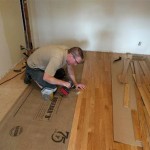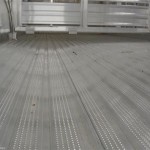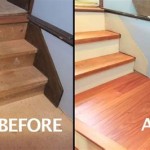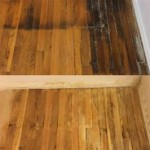Stair Flooring Options: A Comprehensive Guide
Stairs are a prominent architectural feature in multi-level homes and buildings, serving both a functional and aesthetic purpose. Choosing the right flooring for stairs is a crucial decision, impacting safety, durability, visual appeal, and overall home value. This article explores various stair flooring options, outlining their characteristics, advantages, disadvantages, and suitability for different applications.
Hardwood Flooring for Stairs
Hardwood flooring is a classic and popular choice for staircases, known for its elegance, durability, and timeless appeal. It offers a wide range of wood species, colors, and finishes, allowing for seamless integration with existing hardwood floors or the creation of a striking contrast. Hardwood stairs are typically constructed with treads, risers, and stringers made from solid or engineered hardwood.
Advantages of Hardwood Stairs:
Hardwood is aesthetically pleasing. A well-installed and maintained hardwood staircase elevates the interior design, adding value and sophistication to the property. Hardwood offers numerous options for customization, allowing homeowners to select the wood species, stain, and finish that best complements their style. Common wood species used for staircases include oak, maple, walnut, and cherry, each offering a unique grain pattern and color variation.
Regarding durability, hardwood is a highly durable material that can withstand significant foot traffic. With proper care and maintenance, hardwood stairs can last for decades, making them a worthwhile investment. The durability of hardwood stairs is dependent on the wood species and finish used. Harder wood species, such as Brazilian Cherry or Maple, are more resistant to scratches and dents compared to softer woods like Pine.
Hardwood can be refinished. Unlike some other flooring options, hardwood can be sanded and refinished multiple times, extending its lifespan and allowing homeowners to update the appearance of their stairs without replacing the entire staircase. Refinishing hardwood stairs involves sanding down the existing finish, repairing any damage, and applying a new stain and protective coating.
Disadvantages of Hardwood Stairs:
Hardwood can be expensive, especially for premium wood species and intricate designs. The cost of materials and installation can be significantly higher compared to other flooring options like carpet or laminate. The expense can be mitigated by selection of commonly used woods.
Hardwood requires regular maintenance. To maintain their appearance and prevent damage, hardwood stairs require regular cleaning, polishing, and occasional refinishing. Neglecting maintenance can lead to scratches, dents, and fading, diminishing the beauty and value of the staircase. Specific cleaning products have been developed for hardwood surfaces.
Hardwood can be slippery, especially with certain finishes. This can be a safety concern, particularly for young children, elderly individuals, and individuals with mobility issues. The application of non-slip treads or runners can improve traction and reduce the risk of falls.
Carpeted Stairs for Safety and Comfort
Carpet is a soft and comfortable flooring option that is often chosen for stairs due to its safety and sound-dampening properties. It provides cushioning, reduces the risk of slips and falls, and absorbs noise from foot traffic. Carpeted stairs are available in a wide range of colors, patterns, and textures, offering ample design flexibility.
Advantages of Carpeted Stairs:
Carpet is safer than harder surfaces such as wood for stair flooring. The soft texture of carpet provides cushioning, reducing the risk of injury in case of a fall. This makes carpet an ideal choice for homes with young children or elderly individuals. Many varieties of carpet have been developed with slip resistance in mind.
Carpet offers sound insulation. Carpet absorbs impact sound, reducing noise transmission between floors. This can be particularly beneficial in multi-story homes or apartments where noise levels can be disruptive. Furthermore, the carpet reduces the sound of foot-traffic on the stairs.
Carpet hides wear and tear. Carpet can effectively conceal minor imperfections and stains, making it a practical choice for high-traffic areas like stairs. The appearance of carpet can be maintained through regular vacuuming and professional cleaning.
Disadvantages of Carpeted Stairs:
Carpet is prone to staining, especially from spills and pet accidents. Removing stains from carpet can be challenging, and some stains may be permanent. Regular cleaning and stain protection treatments can help to minimize the risk of staining.
Carpet harbors allergens. Carpet fibers can trap dust, pollen, and pet dander, which can trigger allergies and respiratory problems. Regular vacuuming and professional cleaning are essential to maintain healthy indoor air quality. Allergy-sufferers might consider low-pile carpets.
Carpet requires professional installation. Carpet installation on stairs can be complex, requiring specialized tools and techniques. Improper installation can lead to uneven wear, bunching, and premature failure, as well as safety hazards. Using a professional installer is recommended.
Laminate and Vinyl Flooring: Cost-Effective Alternatives
Laminate and vinyl flooring are cost-effective alternatives to hardwood and carpet, offering a balance of aesthetics, durability, and affordability. These materials are available in a variety of styles, including wood-look and tile-look options, making them suitable for a wide range of design preferences.
Advantages of Laminate and Vinyl Stairs:
Both laminate and vinyl are more affordable than hardwood. Laminate and vinyl flooring are significantly less expensive than hardwood, making them an attractive option for budget-conscious homeowners. The lower cost is coupled with a ease of installation.
Laminate and vinyl are durable and water-resistant. Laminate and vinyl are resistant to scratches, dents, and moisture, making them suitable for high-traffic areas and homes with pets or children. The increased water resistance versus hardwood makes for easier cleanup and less worry about spills.
Laminate and vinyl are easy to install. Laminate and vinyl flooring can be installed using a click-lock system, making it a DIY-friendly option for homeowners. Professional installation is still recommended for best results, but the process is generally simpler and less expensive than hardwood installation.
Disadvantages of Laminate and Vinyl Stairs:
Laminate and vinyl are less luxurious than hardwood. While laminate and vinyl can mimic the look of hardwood, they lack the natural beauty and warmth of real wood. Similarly, the lower cost is matched by a perception of lower quality compared to natural woods or textiles.
Laminate and vinyl can sound hollow. Laminate and vinyl floors can produce a hollow sound when walked upon, which can be undesirable in some homes. Using an underlayment can help to reduce noise transmission.
Laminate and vinyl are difficult to repair. Damaged laminate or vinyl planks typically need to be replaced, as they cannot be refinished like hardwood floors. Finding a matching replacement plank can be challenging, especially for older flooring installations.
Tile Flooring for Stairs: Durability and Style
Tile flooring, including ceramic, porcelain, and stone tiles, offers exceptional durability and design versatility for staircases. Tile is resistant to scratches, stains, and moisture, making it an ideal choice for high-traffic areas and homes in humid climates. Tile stairs can be customized with various colors, patterns, and textures, allowing for unique and visually appealing designs.
Advantages of Tile Stairs:
Tile is very durable, resisting scratches and stains. Tile is one of the most durable flooring options available, capable of withstanding heavy foot traffic, spills, and impacts. This makes tile an ideal choice for stairs in commercial buildings or homes with active families.
Tile is easy to clean and maintain. Tile surfaces are easy to clean with simple household cleaners, making them a low-maintenance option for busy homeowners. The non-porous nature of tile also prevents the absorption of stains and odors.
Tile offers design versatility. Tile is available in a wide range of colors, patterns, sizes, and textures, allowing for endless design possibilities. Tile can be used to create a classic, modern, or eclectic look, depending on the chosen style and arrangement.
Disadvantages of Tile Stairs:
Tile can be slippery, especially when wet. The smooth surface of tile can be slippery, especially when wet, posing a safety hazard. Using textured tiles or adding non-slip treads can improve traction and reduce the risk of falls.
Tile is cold and hard. Tile can feel cold and hard underfoot, especially in colder climates. Adding area rugs or using radiant heating can help to mitigate this issue.
Tile installation is complex. Tile installation requires specialized skills and tools, making it best left to professional installers. Improper installation can lead to cracked tiles, uneven surfaces, and water damage.
Choosing the right stair flooring option requires careful consideration of various factors, including aesthetics, durability, safety, budget, and maintenance requirements. Each material offers its own unique set of advantages and disadvantages, and the best choice will depend on the specific needs and preferences of the homeowner or building owner. By carefully evaluating the options and consulting with flooring professionals, individuals can make an informed decision that enhances the beauty, functionality, and safety of their stairs.

What S The Best Flooring For Stairs Direct

What S The Best Flooring For Stairs Direct

How To Install Vinyl Plank Flooring On Stairs In 6 Steps Inc

Stairs Flooring The Best Staircase Materials

What S The Best Flooring For Stairs Direct

The Top 5 Stair Flooring Ideas For Your Home Rods Direct

The Best Flooring Options For Stairs Explained Carpet Guys

Stairs Flooring The Best Staircase Materials

Staircase Carpet Ideas For Your Home Carpetright

Stairs Flooring The Best Staircase Materials
Related Posts








